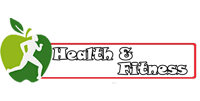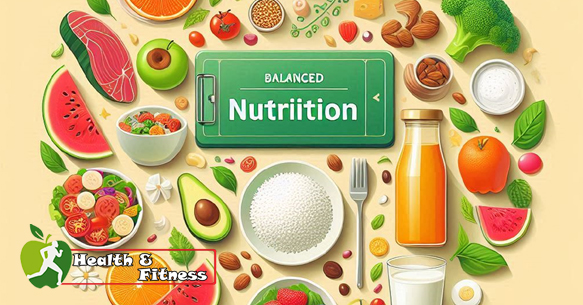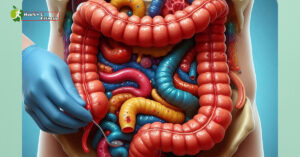Are you tired of diets that tell you what not to eat but don’t leave you feeling good? Do you want to know what a healthy diet really looks like? You’re not the only one wondering. It can be hard to sort through all the diet advice out there. The good news is, being healthy doesn’t take extreme steps or mean you can’t enjoy your food.
This guide will help you understand the basics of balanced nutrition. It will give you ways to feed your body well. We’ll look at why some diets don’t work, talk about the five food groups, and give you tips for eating healthy for a long time. Ready to feel better and have more energy? Let’s get started!
Understanding Balanced Nutrition
Balanced nutrition is key for a healthy body and mind. It’s not just about losing weight. Forget those quick diets you see everywhere. They often don’t give you what you need and can even be bad for you. It is important to understand the risks of unbalanced diets and the rise of misinformation. Let’s explore what balanced nutrition really means and why it matters.
What is Balanced Nutrition?
Balanced nutrition means eating the right amount of nutrients. You need the right mix of vitamins, minerals, and other things your body uses to work. It’s about getting enough of everything you need without too much of anything. Eating a variety of foods is essential for obtaining balanced nutrition.
Why is Balanced Nutrition Important for Health?

A balanced diet gives you more energy. It helps keep you from getting sick. It’s good for your overall health. When you don’t eat well, you can have problems like diabetes, high blood pressure, and heart disease. Eating well helps your body work the way it should.
The Five Essential Food Groups
To eat a balanced diet, it helps to know about the five food groups. Each group gives you different things your body needs. Let’s take a closer look at each one and what they do for you.
Carbohydrates: The Body’s Primary Energy Source
Carbs give you energy to move and think. Choose complex carbs like whole grains, not simple carbs like sugary snacks. Good sources of carbs are rice, wheat, and millets. Complex carbs keep your blood sugar steady.
Proteins: Building Blocks for Growth and Repair
Protein helps you grow and repair your body. It builds muscle, fixes tissues, and makes enzymes. Great protein sources include dal, meat, nuts, and seeds. Make sure to get enough protein every day.
Milk and Milk Products: Powerhouse for Bone Health
Dairy foods are good for your bones. They have calcium, vitamin D, vitamin A, and protein. These nutrients keep your bones strong. If you can’t have dairy, there are other choices with calcium.
Fruits and Vegetables: Nature’s Protective Shield
Fruits and veggies have vitamins, minerals, and fiber. They help protect you from getting sick. These foods boost your immune system. Aim to eat a colorful variety every day.
Fats and Oils: Essential in Moderation
You need some fat for your body to work right. Fat helps with hormones, vitamins, and your brain. Choose healthy fats like olive oil and avocado. Just don’t eat too much.
Debunking Diet Myths and Fad Diets
You’ve probably heard of diets like keto, paleo, and detox diets. They promise fast results, but are they good for you? Let’s see why these diets may not be the best choice.
The Problem with Fad Diets
Fad diets are hard to stick with. You might not get all the nutrients you need. They can be bad for you in the long run. They often cut out whole food groups.
Why Balanced Nutrition is Superior to Fad Diets
A balanced diet is a long-term plan for health. It’s about feeling good, not just losing weight fast. With balanced nutrition, you eat a variety of foods. You learn to make healthy choices that you can keep up.
Practical Tips for Achieving a Balanced Diet
Want to eat a more balanced diet? Here are some simple things you can do every day. These tips will help you feel better and be healthier.
Eat When You’re Physically Hungry, Stop When Full
Pay attention to your body. Eat when you’re truly hungry. Stop when you’re full. Don’t eat because you’re bored or sad.
Replace Unhealthy Snacks with Healthier Alternatives
Instead of chips or candy, grab a fruit, vegetable sticks, or a handful of nuts. Keep healthy snacks handy. That way, you’ll make better choices when you’re hungry.
Stay Hydrated: Drink Plenty of Water
Water is key for good health. Skip sugary drinks like soda. Drink water throughout the day. Carry a water bottle with you as a reminder.
Limit Processed Foods, Sugary Drinks, and Sweets
These foods can hurt your health. They often have a lot of sugar, salt, and unhealthy fats. Try to eat them less often. Cook more meals at home using fresh ingredients.
Plan Your Meals and Shop Smart
Plan what you’ll eat for the week. Make a grocery list. Stick to the list when you shop. This helps you buy healthy foods and avoid junk food.
The Importance of Physical Activity
Eating well and being active go hand in hand. Exercise makes your body stronger and helps you feel better. Let’s see how they work together.
Combining Balanced Nutrition and Exercise
When you eat well and exercise, you have more energy. You can keep a healthy weight. You lower your chance of getting sick. Aim for at least 30 minutes of exercise most days.
Conclusion: Your Path to a Healthier, Happier You
Eating a balanced diet is a way to a healthier you. Understand the five food groups, avoid diet fads, and use the tips. You’re paving the way for a healthier, happier life. Remember to eat whole foods. Listen to your body and stay active. Embrace balanced nutrition and feel great!



23 Comments
Pingback: Left Arm Pain ICD-10: Understand Causes & Find Relief
n6m104
flehz5
m5nqhm
f8jwnj
b13or5
Pingback: Average Height for a 13 Year-Old: Growth Patterns & Parental
v6s913
g9oj4z
8u32ov
hk218l
bfou6g
vajll1
Thanks for sharing. I read many of your blog posts, cool, your blog is very good.
qdx5d8
mv7wdv
I just couldn’t go away your web site prior to suggesting that I extremely enjoyed the usual info a person supply in your guests? Is gonna be back steadily to investigate cross-check new posts.
98ntz4
k6hqxo
rck0zh
su7qb6
76qiyt
Pingback: Duck Egg Blue: 7 Surprising Benefits for a Healthier You